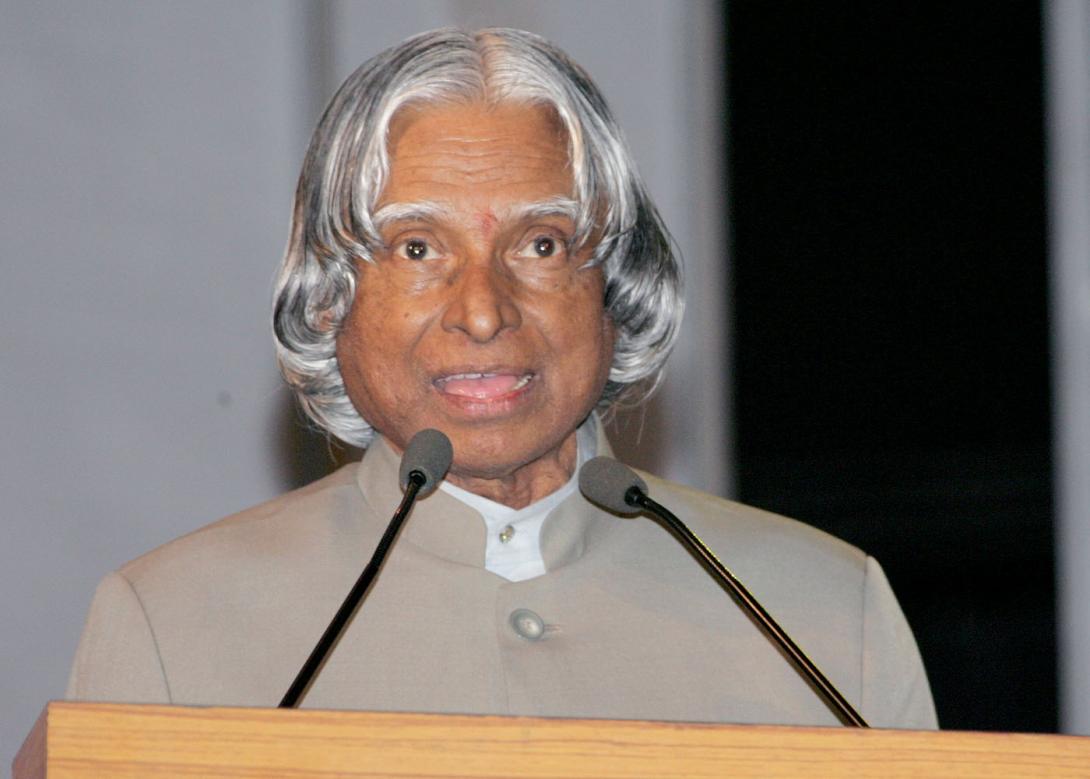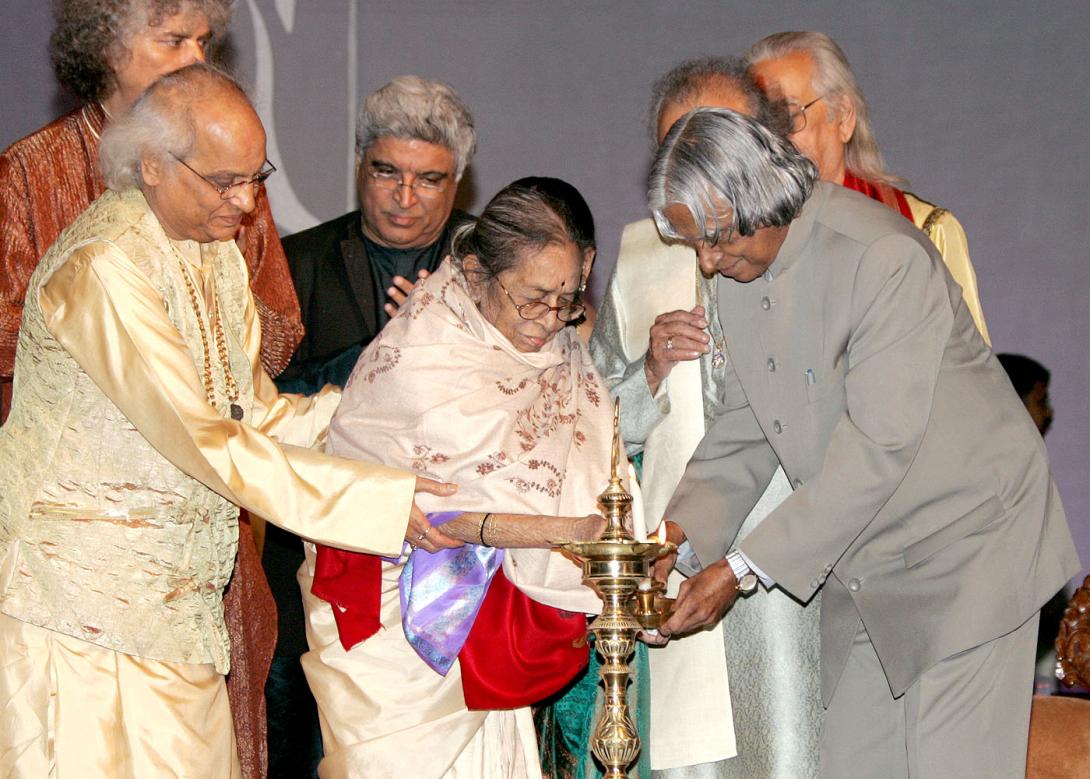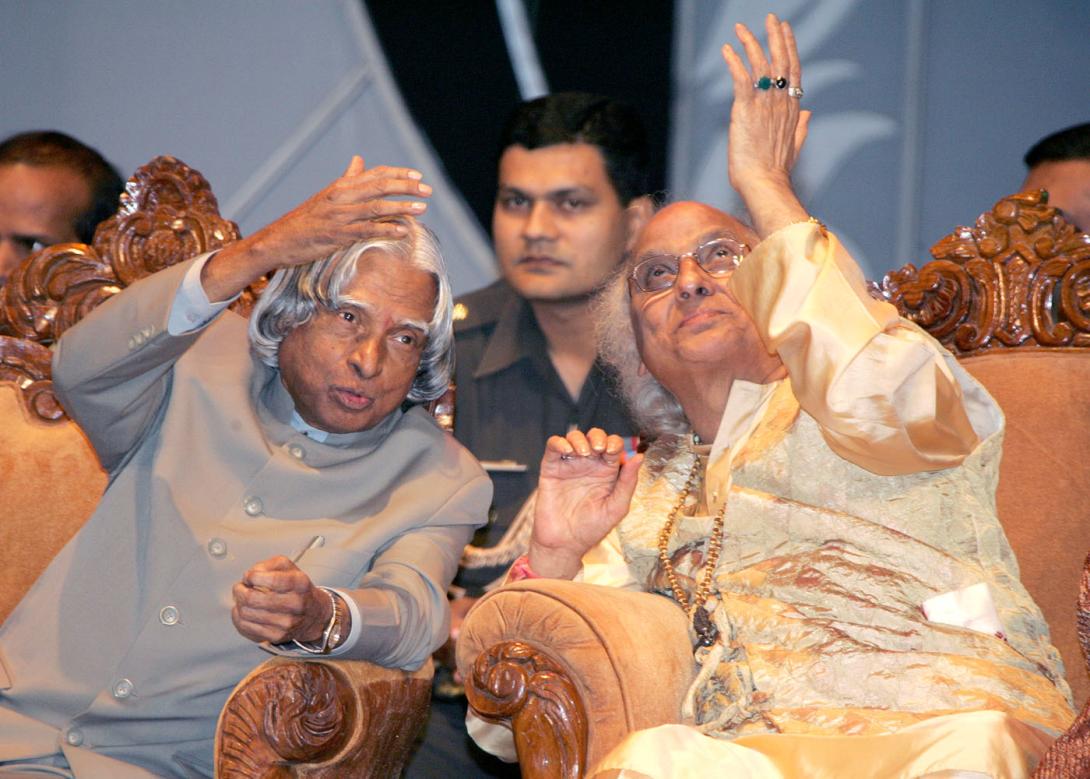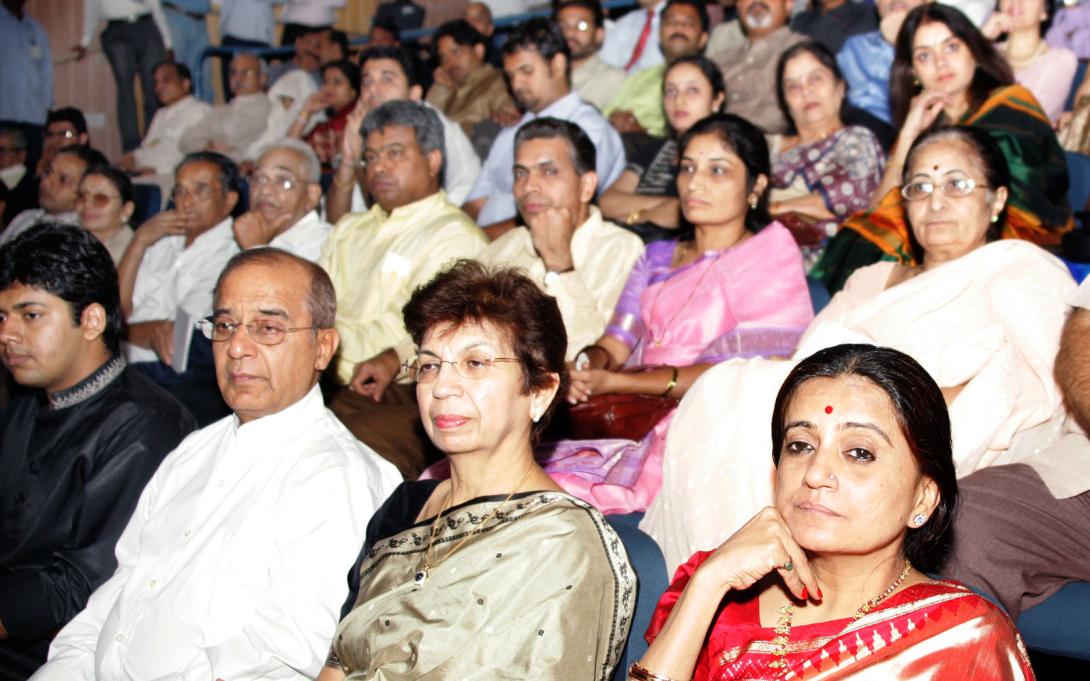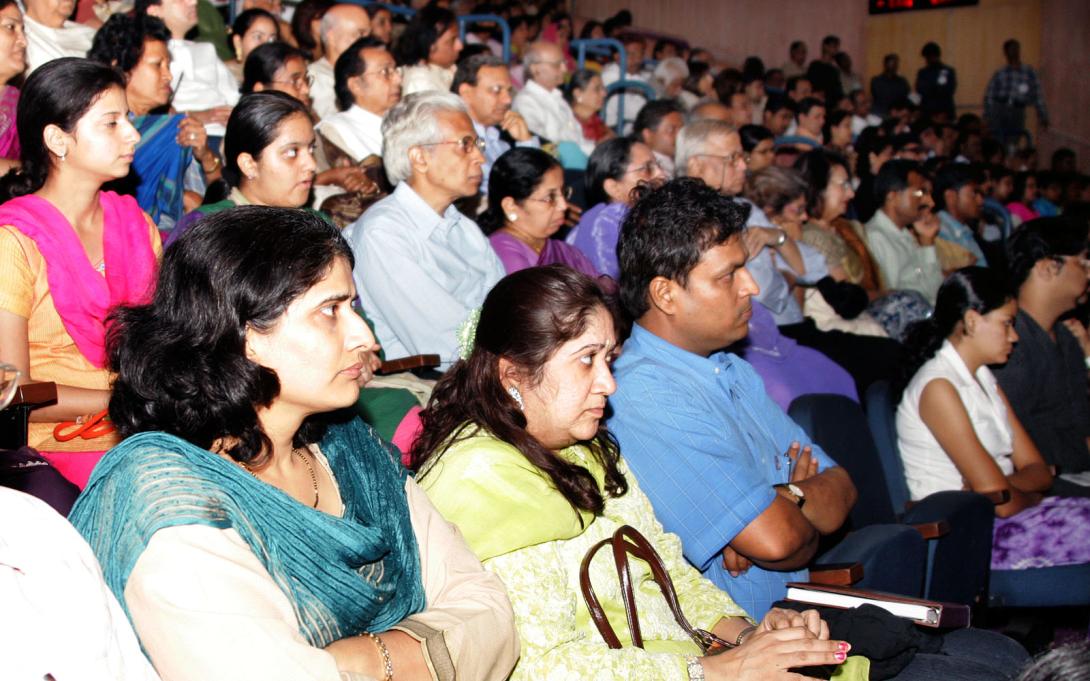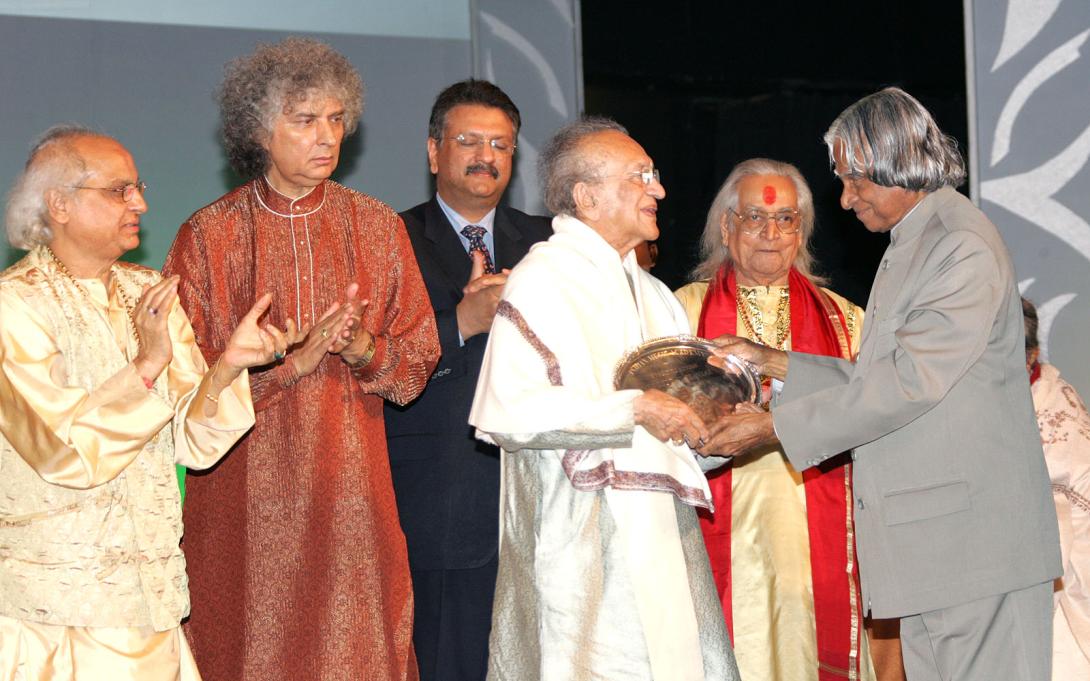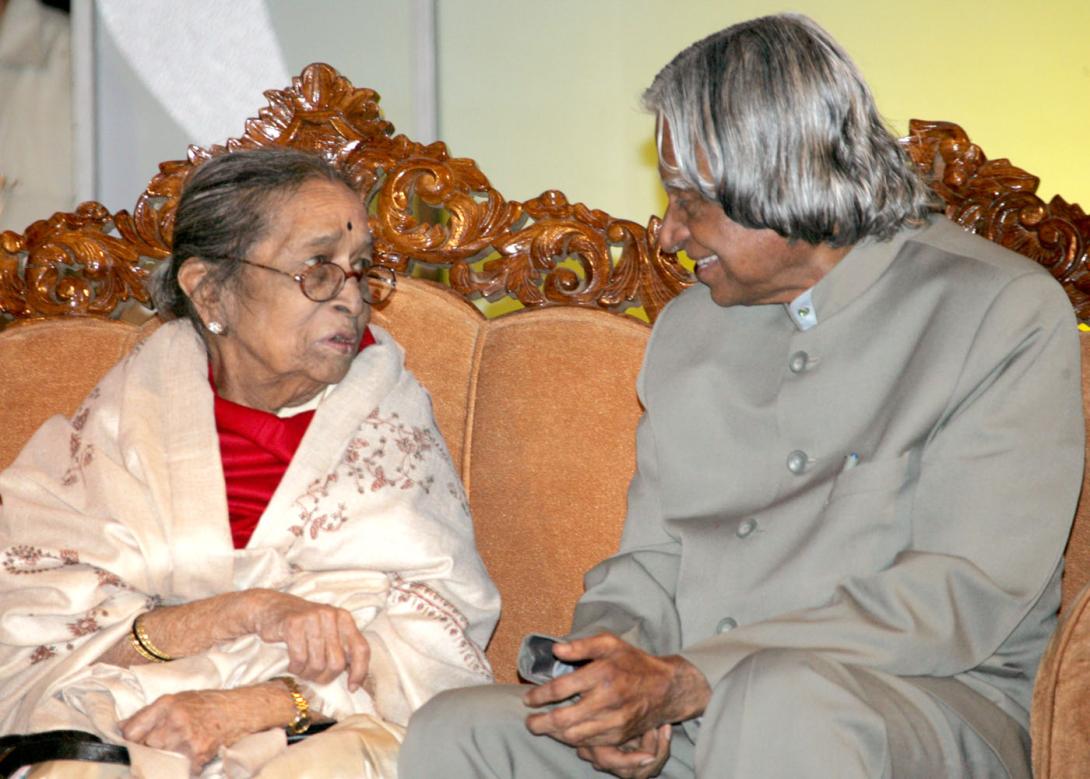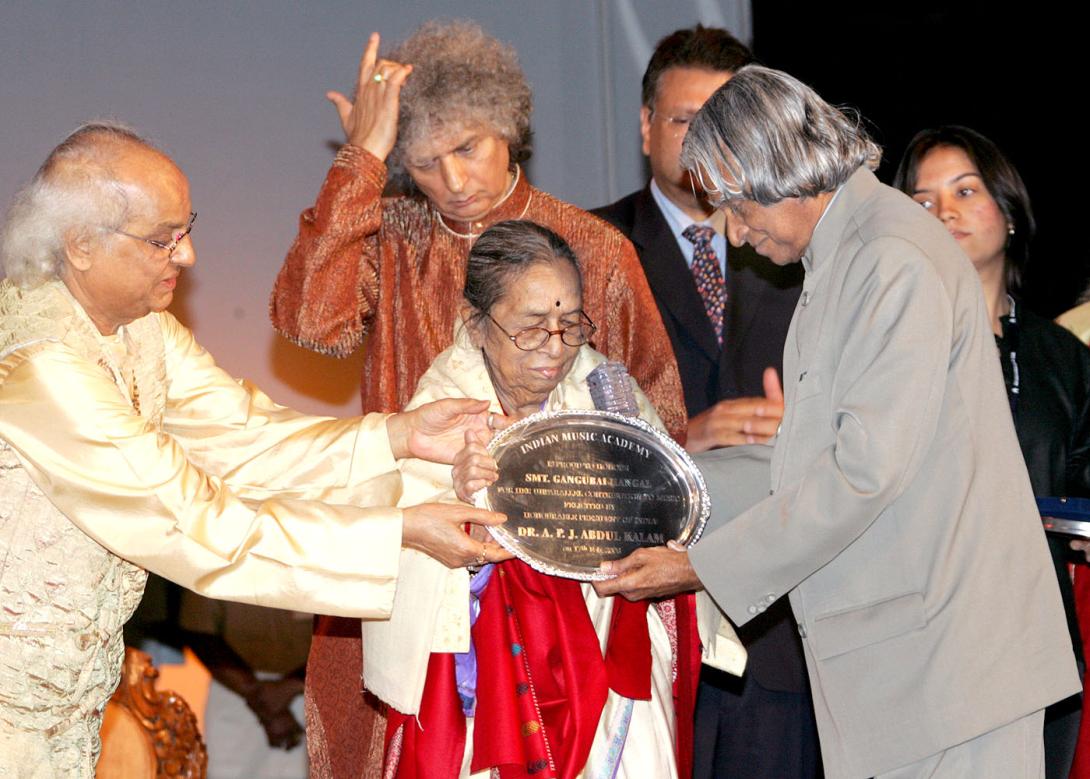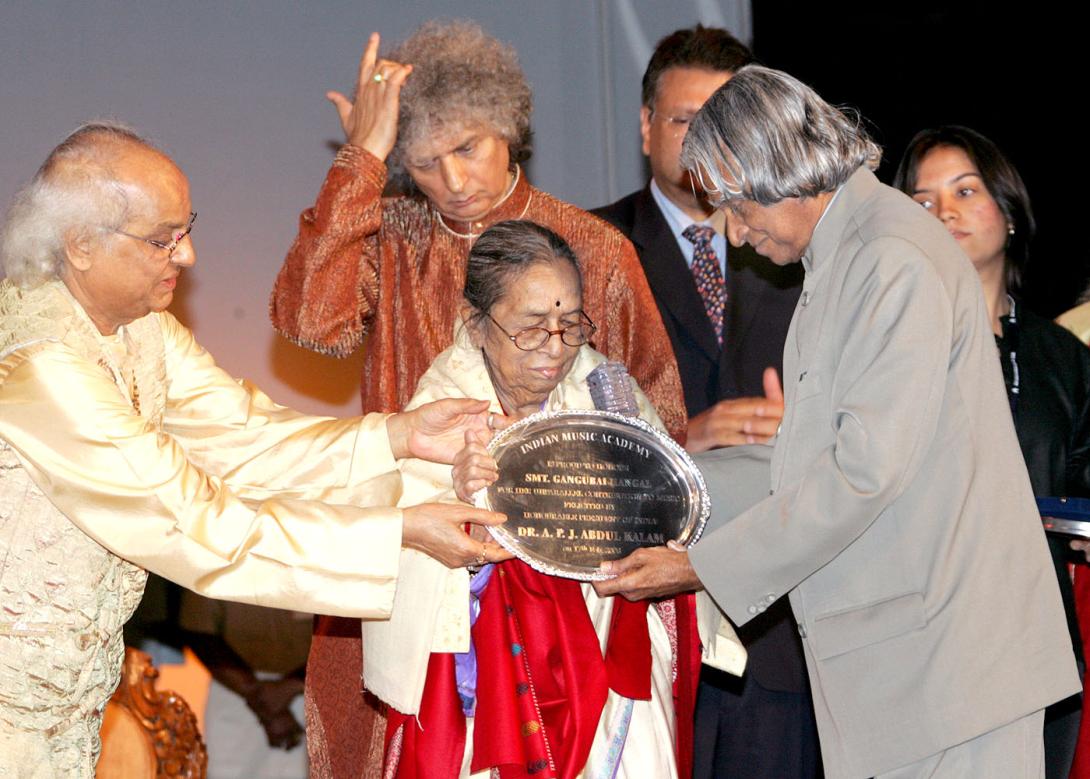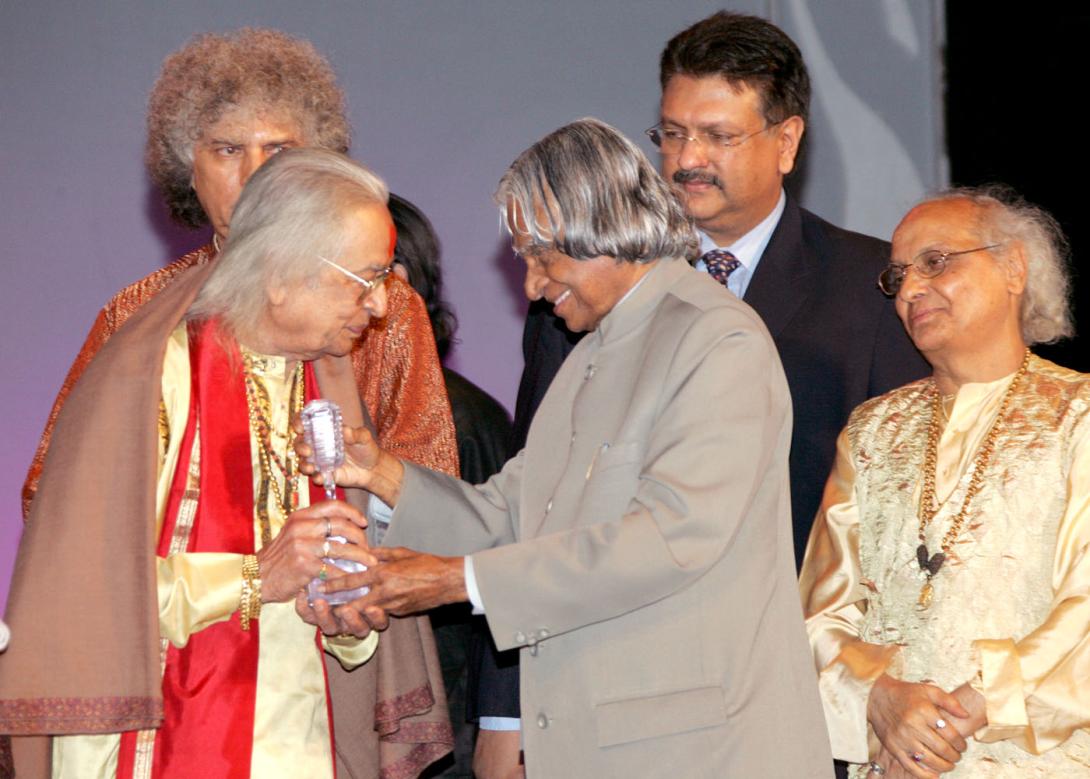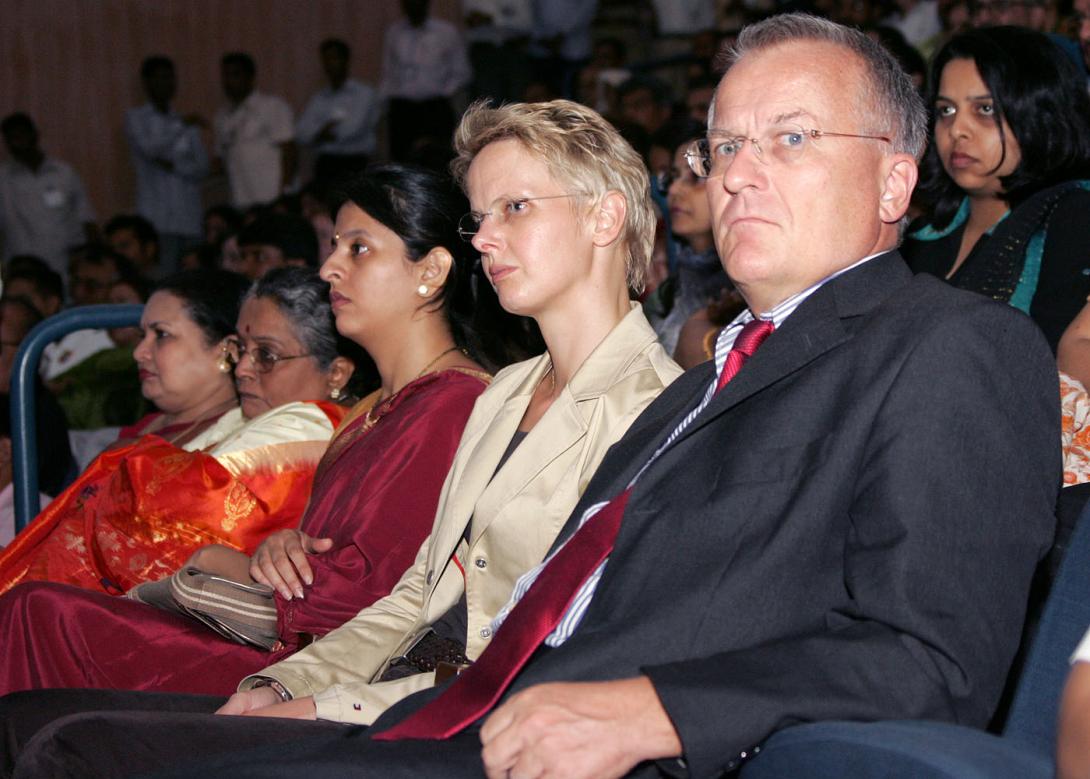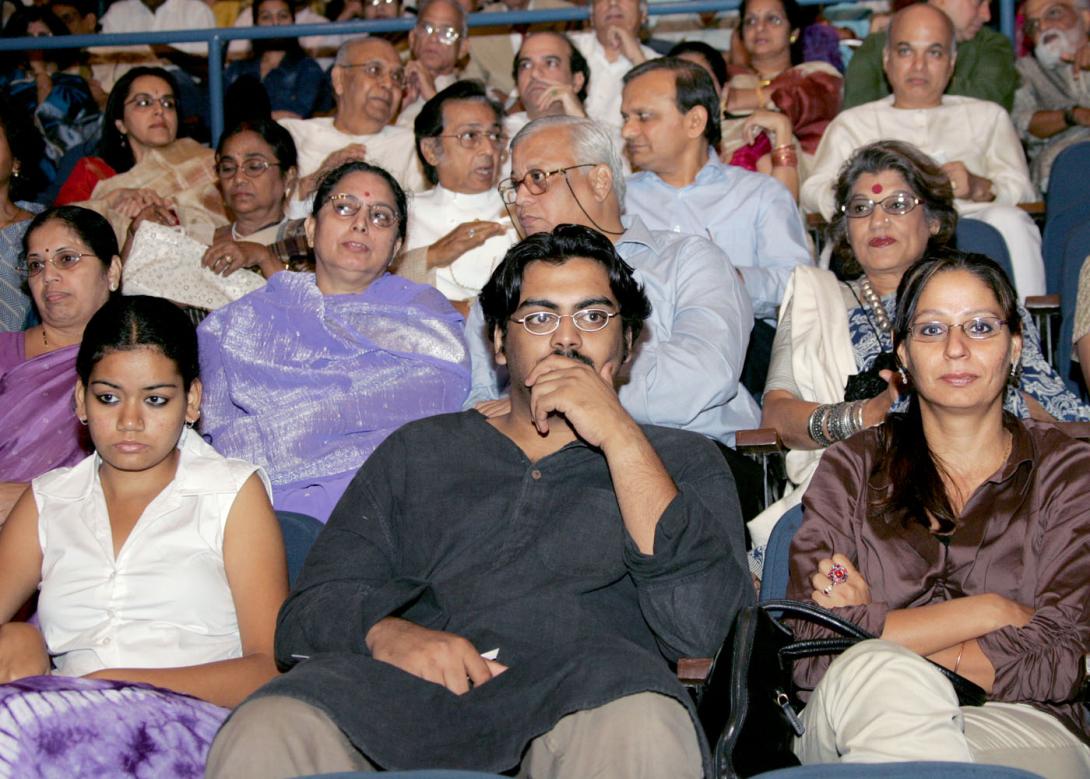Address At The Inauguration Of Indian Music Academy, Mumbai
Mumbai : 17-02-2006
Music elevates the mind
I am indeed delighted to participate in the Inauguration of the Indian Music Academy primarily formed with the objective of spreading and popularizing Indian music around the globe by the musicians. I congratulate the musical legends Pandit Ravi Shankarji, Ustad Ali Akbar Khanji, Pandit Bhimsen Joshiji, Pandit Kishen Maharajji, Smt Gangubai Hangalji and Smt Lata Mangeshkarji who are being awarded today by the Indian Music Academy. Rumi?s poem aptly reflects the great mission of the musicians of Indian Music Academy,
?Angel is free because of his knowledge,
The beast because of his ignorance,
Between the two remains the son of man to struggle?
How to come out of this human struggle? How to elevate the children of God to angelic state? This can be done only by music. Since one of the aims of Indian Music Academy is to protect, preserve and promote the beauty of music, I would like to share the strategies adopted by Smt. Rukmini Devi Arundale during the pre and post-independence period for promoting arts. Rukmini Devi was a multi-faceted personality and indeed a phenomenon of the 20th century.
"Angel is free because of his knowledge,
The beast because of his ignorance,
Between the two remains the son of man to struggle"
How to come out of this human struggle? How to elevate the children of God to angelic state? This can be done only by music. Since one of the aims of Indian Music Academy is to protect, preserve and promote the beauty of music, I would like to share the strategies adopted by Smt. Rukmini Devi Arundale during the pre and post-independence period for promoting arts. Rukmini Devi was a multi-faceted personality and indeed a phenomenon of the 20th century.
Nurturing Bharatanatyam among the Young
Rukmini Devi entered into the arena of dance and music when she was around 30. The divinity of Bharatanatyam and its generating capacity of happiness were not visible to the common man and parents were shunning away their children from the divine art. To change the situation Rukmini Devi learnt dancing herself and started the institute Kalakshetra to teach dancing. She had tremendous difficulty in motivating parents from sending their children to her institute. To overcome this situation she developed the concept of dance-drama. She had enacted 26 dance dramas and we can say that she is a pioneer in this field. Some of her famous dance drama?s are ?Kutrala Kuravanchi?, Kalidasa?s Kumara Sambhavam and Valmiki Ramanayanam in 6 parts. The idea of dance drama was to inject the divinity of the dance and portray it as a part of the story. This technique worked well and people started sending their children to Kalakshetra for learning. Added to this it also preserved and highlighted the mythological elements contained in our literature.
Kalakshetra Institution
Today, Kalakshetra has an intake of 35 to 40 children every year for a four-year course in dance or music. The entry is at the 10th class level and they are awarded a diploma in dance or music. They have an aptitude test to select the students and the students are kept under probation for a period of one year. If the student is not able to show consistent performance, they are advised to take up the field of their choice. Dance theory, Yoga, Music, Telugu, Sanskrit and Tamil are compulsory for these students. During the four-year period they graduate to conduct a dance programme, teach Bharatanatyam independently and perform a solo for at least three hours. With this qualification all the students are able to find a placement immediately after completion of the course.
In addition to the above she has been the force behind revival of crafts education for women, revival of old pattu Saris, Kalamkari natural dyes which are being run as vocational course in Kalakshetra even today. This training empowers the trainees to create small enterprises in our village complex for providing employment and entrepreneurial opportunities to the rural population and also the poorer sections in the small towns. I would recommend the music academy to adopt such a strategy for promoting different forms of classical Indian music so that the students can not only learn and enjoy the music suited to his or her aptitude but also be able to make a living in this competitive world.
Special Place for Bharatanatyam in performing Arts Rukmini Devi Arundale has definitely brought a special place to Bharatanatyam in performing art through education, research in Dance, Music and Drama. Due to her pioneering effort in preserving and practicing this art, it is being taught and researched in many universities in the country. The message she gives in all her thoughts and actions is that Bharatanatyam is a lovable art, a noble and a divine profession. With this nobility, there was great rush in the later part of 20th century from young people to take up the study of Bharatanatyam, which enhanced the physical and spiritual dimensions of the individual. I am sure the legendary members of the Indian Music Academy can enhance the glory to the classical Indian music by injecting their experience and singing the glory of music. Now, I would like to discuss about the contribution of fine arts in promoting unity of minds among the people.
Art, Music, Dance, Drama for Unity of minds
I had the opportunity of witnessing to great exponents of music and dance. The experience of listening and seeing them leads me to think that whether music and dance can be used as a tool for ensuring global peace and act as a binding force. In recent years, terrorism is taking a heavy toll of many innocent lives. I was thinking whether there is any alternative solution other than military, economic and judicial approach to end this problem. I am now convinced that one of the important tools in our country could be music and dance for containing terrorism. Fortunately, we have a rich civilizational heritage of 5000 years blending literature, music, dance and dramatics.
Can music and dance bind the hearts when the minds are disturbed and hearts are heavy? Answer seems to be a positive "yes". It can. In 1962 when India suffered a set back in the Indo Chinese conflict and the people of India were at its lowest. At that time many groups of musicians and artists went to the warfront close to our borders and gave musical and dance drama performances, which gave strength to the troubled hearts and elevated the spirits of the troops and the people of a nation. But what is now required is to use the same music and dance to remove hatred from the mind and to disarm those who stockpile terrorist tools to attack the innocent.
The need of the hour is the Unity of Minds and hearts not only within our country but also universally. In my opinion music and dance can play a balancing note and unify the mind for a harmonious living cutting across geographical boundaries. I am confident that the legendary personalities of Indian Music Academy can definitely play a major role in unifying the minds and hearts of people living across the globe.
Conclusion
How do we connect our billion people? It is a big task. Our Civilizational heritage has given us certain unique binding and integration. Music, particularly, classical Hindustani music in the North and carnatic music in South have proved to be great integrators of people.
You will find, in Hindustani music, whether it is Sitar or Vocal or Shenai it always attracts a wide spectrum of people from all walks of life. I am personally experiencing it. At Rashtrapati Bhavan, we have bi-monthly musical programmes called ?Indradhanush?. I am sure classical music also has larger audiences across various sections of the society.
Once again let me congratulate the award winners and my best wishes to all the members of the Indian Music Academy in their mission of inspiring the younger generation to take up Indian music as a profession and take pride in preserving Indian traditional cultural heritage.
May God bless you.

